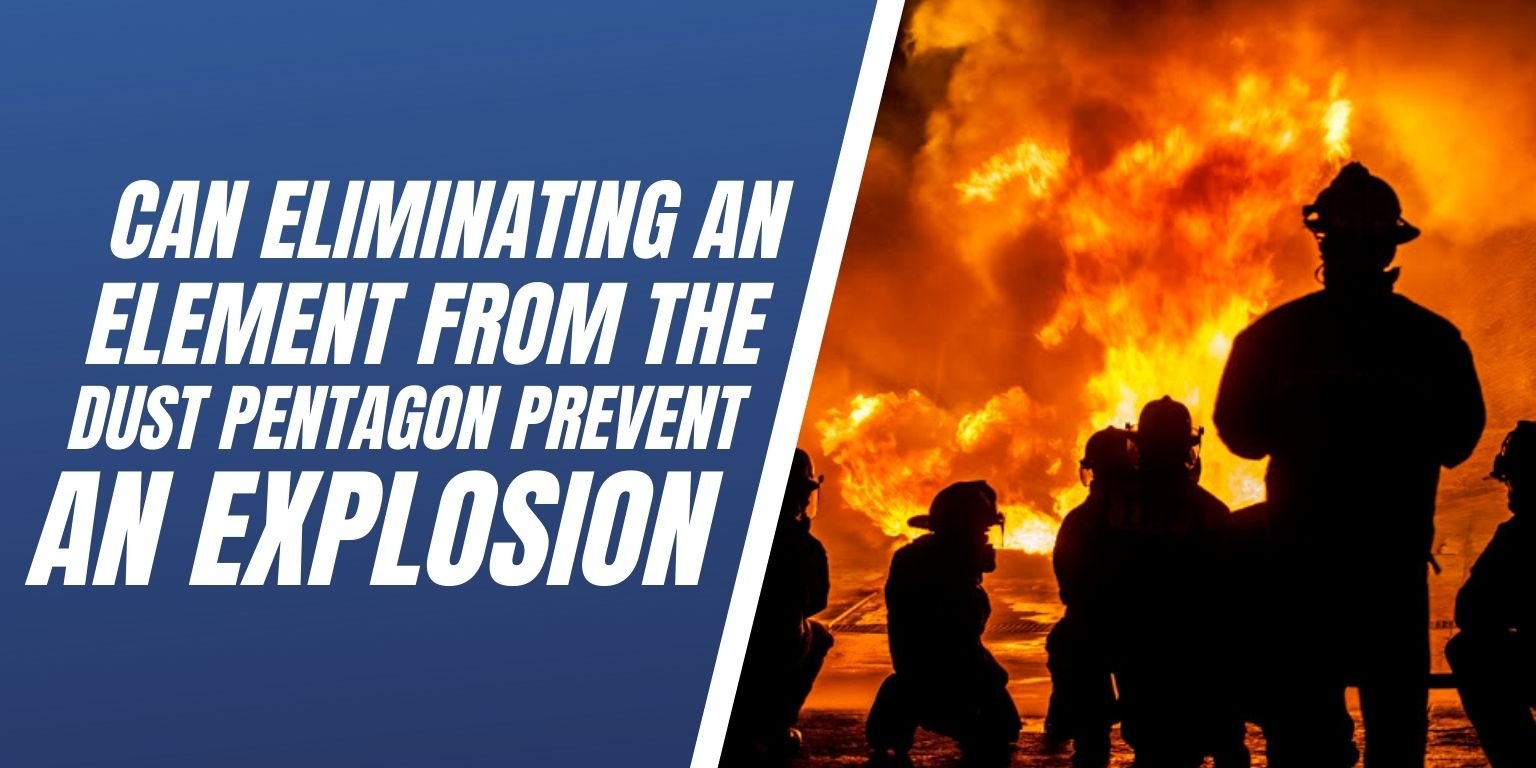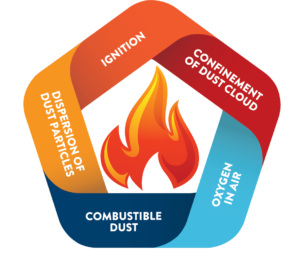
We’re used to knowing that flammable solids will burn easily, but what many people may not realize is that dust can be even more flammable and explosive. According to the National Fire Protection Association (NFPA) 654, defines combustible dust as “A combustible particulate solid that presents a fire or deflagration hazard when suspended in air or some other oxidizing medium over a range of concentrations, regardless of particle size or shape.”
For a fire to burn it needs three elements present simultaneously: Fuel, Ignition, and Oxygen – also known as the “Fire Triangle”. But for a combustible dust explosion, two additional elements are needed to form what is known as the “Dust Explosion Pentagon”. These two elements are Confinement and Dispersion. They are created when the fuel, in this case combustible dust, is spread out as a dust cloud within a closed area, such as a factory or warehouse.

What Elements Can Be Eliminated to Prevent A Dust Explosion?
A combustible dust explosion is created when the dust (fuel) is spread out as a dust cloud within a closed area, such as a factory or warehouse. Taking away even one of these elements can remove the risk of a dust explosion. However, be mindful that the risk for a fire can still be present.
Oxygen: Unfortunately, we all need oxygen. Oxygen is a component of air and is necessary for workers to breathe. Therefore, it is nearly impossible to remove from the explosion pentagon.
Ignition (heat, spark): This element can be contained to some extent by removing any open flames or potential for sparks to be created. It is also important to make sure machinery is clean and not getting hot when operating. Removing the risk for an ignition source is difficult since it can originate from many different sources.
Combustible Dust (fuel): Proper combustible dust cleaning is one of the most effective ways to prevent a dust explosion. By taking away the fuel (dust) from the dust explosion pentagon, it removes the risk of an explosion, and also removes the possibility for a fire. The NFPA combustible dust standards outline the best methods for cleaning this dust, which should be done by a certified and trained professional.
Dispersion: By cleaning any accumulated dust, you are preventing the possibility of dispersion. No dust, no dispersion! Again, having a facility professionally cleaned by technicians who follow NFPA combustible dust protocol is a recommended step to prevent a potential catastrophic explosion.
Confinement: This is another difficult element of the dust explosion pentagon to control, as most facilities are in a closed area. Environmental issues prevent manufacturers from releasing accumulated dust into the outside air, which means it stays confined inside the building.
In summary, though not all elements of the combustible dust pentagon can be completely eliminated, combustible dust and its dispersion can be controlled with effective dust collection systems, strict observance of OSHA standards, and regular cleaning by certified and trained environmental professionals.
Hughes Environmental
Hughes Environmental has performed combustible dust cleaning in a wide array of facilities and has dealt with many types of combustible dust. Our technicians that are trained, certified and up-to-date on common best practices. We have an OSHA trainer on staff, and our technicians have been through OSHA 10- or 30-hour training. We also have Council-certified Indoor Environmentalists (CIE) and Council-certified Microbial Remediators (CMR) on staff.
Contact Us Here or call us at 888-845-3952

